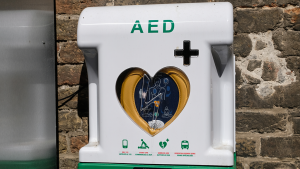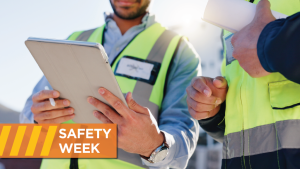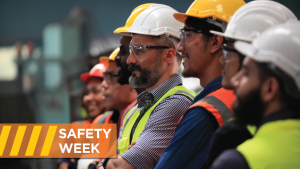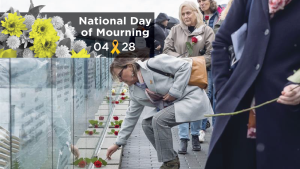While many are looking forward to the warm, bright months of summer, safety experts are reminding contractors that July and August are when serious injuries and fatalities tend to spike.
Global contractor and supplier information management company ISN analyzed more than 55,000 recordable incidents from 2017 to 2019. The data analysis resulted in ISN’s Serious Injury and Fatality Insights Report.
Dag Yemenu, executive vice-president of ISN, answered questions from the Journal of Commerce about what that data reveals about summer safety and how summer construction could be done safer.
Q: What are some of the reasons that serious injuries and fatalities spike among contractors during the summer months?
A: In summer months, workers will typically work longer hours due to extended periods of sunlight. This could potentially result in fatigue, which reduces both physical and cognitive reaction times in workers and can increase the likelihood of an incident occurring. Increased temperatures and traffic congestion associated with summer months may also contribute.
Q: While we have seen an overall decline in incident rates, serious injury and fatality (SIF) rates have not done the same. Why might this be?
A: Traditionally, safety professionals have followed Heinrich’s Safety Triangle, which theorizes that for every serious injury or fatality, there are 29 minor injuries and 300 near-misses. This implies that if the number of near-misses and minor injuries are reduced, the number of SIFs will also be reduced. However, this has not been the case. Instead of focusing on the reduction of all incidents, organizations are finding that efforts should centre around identifying incidents with the potential to cause a SIF.
Q: What are some of the common hazards or circumstances that lead to injury/death during these months?
A: ISN’s SIF analysis found that the top three causes of a serious injury or fatality were consistently in contact with an object or equipment (including struck by and caught between), slips, trips and falls, and bodily reaction.
Q: What can employers do to mitigate these risks?
A: Data collection and analysis are crucial to developing SIF prevention strategies. The analysis of past incidents can shed light on risks that an organization faces and provide direction on where it can take action to mitigate the risk of SIFs moving forward. The scope of data collection also should include contractor as well as company employee incidents.
Mitigation strategies should also shy away from fixing the individual worker. It is important to recognize humans will inevitably err and instead focus on designing systems and processes that eliminate the chance for that human error. For organizations that outsource work to third-party contractors, part of the strategy for mitigating risks should be the implementation of a robust contractor pre-qualification and management system throughout the operations.
Q: What is a “culture of safety” and how can an employer work to cultivate it?
A: An organization’s safety culture is a collective set of attitudes, values, norms, beliefs and practices that employees and an organization’s third-party contractors and subcontractors share with respect to workplace safety. In order to cultivate a culture of safety, leaders should first understand the current state of their organization’s safety culture.
Leaders should capture the perspectives of the entire workforce, including employees and third-party contractors and subcontractors. Feedback from those closest to risks – typically field workers, tradespersons, foremen and supervisors – could provide valuable insights on perceptions and safety culture on the ground. This should be accomplished by using a systematic approach to organize the perceptions about safety culture and establish an initial baseline. Once the baseline has been established, leaders can pinpoint areas of strength, weakness, and risk, thereby allowing the simultaneous celebration of wins and prioritization of action plans.
These changes are an ongoing process and organizations should regularly review safety performance to evaluate if actions implemented have created positive change. If culture is reassessed every 12 to 24 months, trends over time can be identified and monitored.
Q: Are there any new emerging technologies, practices or techniques that you believe show promise at reducing injuries/fatalities?
A: Technology that assists with incident data collection and management can be used to drive reduction of SIFs through data-driven strategies. Specifically, those that provide timely reports and analytical insights available on incident and near miss data are valuable. These insights are key in identifying risks specific to an organization and to effectively designing reduction strategies.
Q: Do you believe the COVID-19 pandemic could help to renew focus on workplace safety?
A: The COVID-19 pandemic has most certainly provided a reminder of the importance of worker health and safety. COVID-19 showed that no organization is immune to an incident, be that injury or illness, and when these events occur they have lasting effects on business operations, emphasizing the advantages of adequate risk identification and mitigation. Investments in enhancing workplace safety and health systems, tools and culture plays a direct role in fostering sustainable and resilient operations for organizations.
Follow the author on Twitter @RussellReports.











Recent Comments